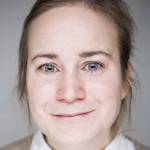Regulated professions exist in all industries and at all educational levels, but they are especially prevalent in education, health, and transport.
Immigrants who are qualified to practice regulated professions in Norway perform much better in the labor market than highly educated immigrants in other professions.– Researcher and project leader Ida Drange at the Center for the Study of Professions, OsloMet.
For the workforce to flow freely, both employees and employers need access to effective and good systems for the recognition of education.
In Norway, we have had complementary education programs for teachers, nurses, and engineers since 2017.
High on the agenda in the EU
On the one hand, professional regulations can help ensure a minimum level of quality in services and work with the potential to cause harm.
On the other hand, national regulations and strict requirements can make it difficult to obtain enough labor – and difficult for people educated abroad to get their competence recognized.
This applies if immigrants lack access to further education and training that will help them meet the profession's standards.
In the EU, both harmonized education and the professional qualifications directive have been implemented to make the transfer between countries easier, but this arrangement does not cover applicants from countries outside the EEA. Immigrants from countries outside the EU often lack subjects or practice required in Norway.
New knowledge about the recognition of education
Previously, there was no coordinated way to do this, but several offers have been developed for nurses, teachers, and engineers.
In the Reconnect project, researchers have followed students who have been admitted to complementary education and examined their experiences from education and transition to work.
Researchers have also interviewed employers for the same professional groups.
The result is new knowledge that can make it easier for employees to get jobs within their profession, and for employers to utilize foreign competence.
In Sweden, they can learn Swedish while taking this education and/or have practice. They learn the language and take the complementary education in parallel, and they get into training much faster.– Researcher Ida Drange.

Nurses quickly find jobs
One clear result is that the new programs for complementary education at OsloMet have made the path to authorization much easier.
What foreign students often lack are specific subjects, such as geriatrics and psychiatry for nurses.
– Labor immigrants also lack language skills, and knowledge of legislation and local conditions, says Ida Drange.
The complementary education programs last for a minimum of one year and are full-time studies.
– Nurses easily find jobs once the authorization is in place, says Drange.
The career path was more unpredictable before
Before the complementary education programs were established, many educated teachers and nurses from countries outside the EU ended up in adjacent professions – teachers worked in adult education, and nurses as unskilled workers in municipal elderly care.
Many went for several years before they received their authorization:
– It was much more unpredictable before, as the criteria changed all the time, says one of the participants.
Many describe the establishment of the new supplementary courses as a relief – finally a more secure path towards authorization and permanent employment. But not everyone finds jobs equally easily.
More difficult for engineers
For engineering students, who often have a refugee background, the transition to work is more variable. Many have encountered challenges in finding relevant positions, despite internships that provide valuable experience.
The different experiences with the transition to work partly relate to different labor markets for the various professions, explains Drange.
In addition, immigrants with nursing education have often worked as healthcare workers before being authorized as nurses, which means they have relevant experience.
A recommendation from the research group is to strengthen collaboration with the labor market to improve the benefits of internships and transition to work:
– Meeting the right people at the right time can be crucial for job opportunities, so measures that help expand students' networks can have positive ripple effects, says Drange.
The language requirement is particularly challenging
In Norway, job seekers must have passed B1 or B2 level in Norwegian before they even apply for the complementary education. Oral and written B2 level in Norwegian is also part of the authorization requirements for several professions.
– In Sweden, they can learn Swedish while taking this education and/or have practice. They learn the language and take the complementary education in parallel, and they get into training much faster, says Drange.
Employers point out that language is especially important for teachers in science subjects, who must be able to explain abstract phenomena to students. For nurses, it is different; they often work in teams and can assist each other if misunderstandings arise.
Full-time study is not for everyone
– It is challenging for adults with financial obligations, perhaps family and other responsibilities, to study full-time for one year, states Ida Drange.
One solution could be that the courses were more flexible and that the programs were offered in more places across the country.
It is also a challenge that there are still several regulated professions, such as doctor and lawyer, where there is no offer of complementary education in Norway, concludes Drange.





